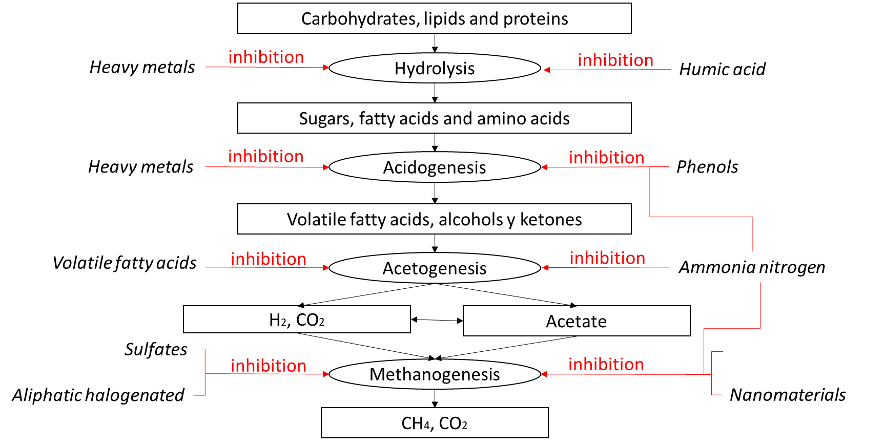 |
|
Based on a literature review, a set of inhibition indicators is presented for each stage of anaerobic digestion according to the behavior of certain parameters: the reduction of the total COD/soluble COD ratio; the low volatile fatty acids (VFA) production; the accumulation of VFA and low acetate production; and the low methane production. Moreover, we present several preventive and recovery strategies for each stage considering the detected inhibition indicator. Some of the preventive strategies are the acclimation of microorganisms to degrade organic-matter in the presence of certain inhibitors, the enrichment of the inoculum with various additives (e.g., sulfate-reducing bacteria, electron donors, mineral adsorbents or nutrients), the dilution of the influent, and the prior removal of the inhibitors. Some of the proposed recovery strategies are the reduction of the inhibitor concentration by removal strategies (e.g., precipitation, adsorption, and sulfate-reduction), intermittent feeding, and decrease of the total influent volume. Lastly, we present the challenges and future perspectives of applying the inhibition indicators and control strategies, e.g., the importance of developing straightforward and low-cost technologies for the monitoring of the various parameters or even for the design of anaerobic treatment systems, including an automatized monitoring system of the parameters proposed as inhibition indicators.
Keywords: Anaerobic digestion inhibition, wastewater treatment, wastes treatment, inhibition recovery, inhibition mitigation.
|
|
 |

